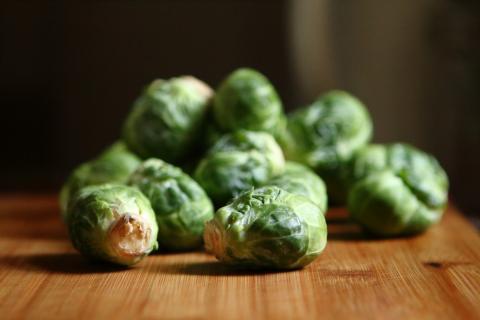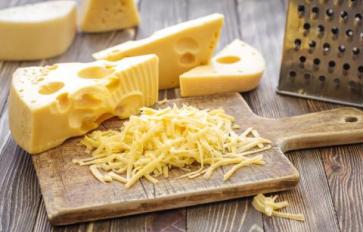
While you may have heard of “folate” and “folic acid,” you may or may not know what it is, what it is for, or if you should take it. Nowadays, there are so many health trends and supplements that it can be easy to forget some of the most basic and simple nutrients and minerals that are important to have in our diets, and possibly as a supplement when needed.
Here are some basics to get you started about Folate and Folic Acid.
What is Folate and Folic Acid?
Folate and Folic Acid are the common names for the water-soluble vitamin B9 — part of the B vitamin family. B vitamins/folate in general help support adrenal function, help calm and maintain a healthy nervous system, and are necessary for key metabolic processes. Folate activates, synthesizes and repairs DNA, and promotes healthy cell growth. Folate is required for red blood cell production, and may also help protect against cancers of the lung, colon, and cervix, and may help slow memory decline associated with aging. Overall, vitamin B9 is essential for human growth and development. Additionally, vitamin B9 may help reduce blood-levels of the amino acid homocysteine, elevated levels of which have been shown to increase risk of heart disease and stroke.
What is the difference between Folate and Folic Acid?
Folate and Folic Acid are often thought to be the same thing, but it is important to know that their forms and effects are different. Folate occurs naturally in plant and animal foods in a “bioavailable” state, while folic acid is the synthetic form of folate. While folate is the best way to take in this B vitamin in terms of easy absorption and integration, sometimes extra supplementation in the form of folic acid can be useful and even necessary in cases of deficiency or conditions where B vitamins are an important part of the healing process.
What foods can I eat to make sure I am getting Folate in my diet?
The good news is that many foods are naturally rich sources of folate. Here are 15 foods that are the best sources of folate. Eating these should keep you in good shape, assuming you are not deficient, in which case it would be a good idea to consult your doctor/health practitioner.
- Leafy Greens—this includes kale, turnip greens, spinach and collard greens to name a few. Make a salad out of any of these or cook them up with some of your favorite recipes, and you will be in the folate money.
- Asparagus—Asparagus is one of the most nutrient dense foods with regards to folate, and one cup of asparagus provides 262 mcg of folate, which is approximately 65 percent of your daily folate requirements. Additionally, it’s also full of other nutrients your body needs, including vitamin K, vitamin C, vitamin A and manganese.
- Broccoli—Broccoli is a great source of folate/folic acid. One cup of broccoli provides approximately 26 percent of your daily folic acid needs, as well as a number of other important nutrients. I love eating broccoli steamed or pan fried, with some olive oil and lemon juice drizzled over it once cooked.
- Citrus—Citrus fruits are the highest ranking of all of the fruits for folate, and oranges are particularly rich in this way. One orange contains about 50 mcg of folate, and a large glass of fresh-squeezed juice may contain even more. Other fruits that are rich in folates are papaya, grapefruit, grapes, bananas, cantaloupes and strawberries. Yum!
- Beans, Peas and Lentils— Pinto beans, lima beans, green peas, black-eyed peas and kidney beans are especially high in folic acid. A small bowl of any type of lentils will provide most of your daily folate needs.
- Avocado—YUM! Not only is avocado one of my favorite foods, but it holds up to 110 mcg of folate per cup, which accounts for approximately 28 percent of your daily folate requirement. Additionally, avocados are an excellent source of fatty acids, vitamin K, and dietary fiber. I love eating avocados over scrambled eggs, on a tuna salad, in tacos or sometimes just a snack by itself lightly salted, and eaten with a fork straight out of the shell! (There are tons more ways to get your avocado fix – it’s super versatile!)
- Okra—Okra is a great source of folate, and provides many other vitamins and minerals. It also helps with cleansing the digestive tract of toxic build-up. A half cup of cooked okra will give you approximately 103 mcg of folic acid/folate.
- Brussels Sprout— Eating one cup of boiled Brussels sprouts provides about 25 percent of your daily recommended amount of folate. Brussels sprouts are also high in vitamin C, vitamin K, vitamin A, manganese, and potassium. This is another one of my favorite foods. I grew up believing that Brussels sprouts were “gross” from all of the negative TV hype they get, but seriously, they are so delicious! I like to pan fry them on both sides in olive oil (or bacon grease!) until they are brown, then pour olive oil over them and salt, and they are ever so tasty.
- Nuts and Seeds—Pumpkin, sesame, sunflower and flax seeds are all excellent sources of folate, and especially sunflower and flax seeds. Nuts are also high in folic acid, especially peanuts and almonds, with one cup offering up to 300 mcg of folate (though I recommend almonds over peanuts any day in terms of their overall health properties). And, nut butters are a great way to go if you get tired of handfuls of nuts.
- Cauliflower—Cauliflower is a great source of folic acid/folate and is also quite high in vitamin C. One cup of cauliflower provides about 55 mcg of folate, which makes up 14 percent of your recommended amount. Personally, I love me a good cauliflower mash! You can also try it in a soup or pizza crust.
And, in addition to these top 10 folate-rich foods, beets, celery, corn, carrots and squash are high in folate as well.
That said, depending on what you have going on, you may be interested in taking a folic acid supplement. For example, I had cervical dysplasia about 15 years ago, and after going through a number of invasive procedures, I found a nurse practitioner who suggested I “give my cervix a break,” and recommended that I take vitamins A, C and E, as well as a folic acid supplement. Six months later, my tests came back clear, no more dysplasia. While there may be many factors in this healing, I do think it is important to supplement in this way when health issues arise.
As always, please consult your physician or holistic health practitioner to find the best dose and most absorbable form for you!








